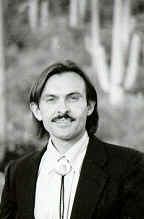Norma Ingram gave the welcome to country. We learned that she had earned her Master's degree In Education at Harvard University and had visited Vermont during her year in the USA. Norma formally welcomed everyone to her ancestral lands after which Rocky and I sang a song for her as the opening to our presentation. Rocky gracefully allowed me to give the initial 45 minute talk and then we split the room into two groups for an hour break-out session. I showed my usual slides to introduce my mother's people and land and then my father's people and land. I began with the idea that youth appear to need to be heroic, now more than ever. In a 1959 paper entitled The Adolescent Hero: A Trend by James William Johnson In Modern Fiction Twentieth Century Literature: A Scholarly And Critical Journal (Volume 5, Number 1 April, 1959), we learn that the literature of adolescent heroes began to dramatically increase in 1929 and continued to grow through 1959, and, I believe has continued ever since. Adolescents, especially males, appear to need to feel heroic in some way. They are saturated with stories extolling heroes and demanding that they be one. Sometimes they choose pathways to heroism that adults find objectionable. For example, joining a gang is a pathway to heroism, though often lethal. I talked about how traditional cultures have historically had procedures for declaring a young person to be an adult and ways for them to be heroic. I talked about using culture to create other opportunities for heroism, including the challenge of the sweat lodge, of sun dance, of vision quest, and the opportunities to feel heroic. I talked about a pediatrician I know who prepares Lakota children for a swim from Alcatraz to San Francisco across the Bay -- the journey that was believed impossible when Alcatraz was founded. We talked about the horseback rides across the reservation that Patrick Chief Eagle provides on the Pine Ridge Reservation. A man in the audience mentioned that he was working with Maori youth to make and sail canoes in the traditional way. I mentioned the programs for Native Hawai'ian youth to make and sail canoes between islands. We just have to find ways to make what we adults consider to be wholesome and healthy seem more desirable and heroic than their alternatives like gang membership or the culture of drugs. I argued that much of dysfunctional adolescent behavior can be understood as an attempt to save face when the attempt to be heroic or become a hero has gone awry. I defined narrative units as I did on Day 3 for the Hearing Voices Conference and talked about the importance of creating positive story. My slides are available to anyone who wants to email me at Email address removed .
After lunch, we heard Leonie Green, the Director of New South Wales Community Services talk about the recently launched Mental Health Strategies for Mission Australia. She said that their previous strategy did not fully identify the need they had. She talked about their biggest barrier being how to refer clients into clinical mental health services. When people rang the mental health outreach services, they didn't get responses because they didn't have the language down that mental health used. They don't actually see themselves as a provider of mental health support services in the broadest sense, though the majority of their clients presented with mental health issues. She said, if you look at the social determinants of mental health, they are homelessness, poverty, unemployment, family breakdown, and the like, so it should be quite natural that their clients should present with mental distress. She said that mental health should be everyone's business. When people stop being homeless, poor, and unemployed, often their mental health improves.
Six months ago, they started drug and alcohol services which have been rapidly expanding. They call this a community of practice for youth services. Everyone involved with youth in that area comes to the table to interact around managing these youth with drug and alcohol problems.
Here are some of the highlights of their 2012 strategy:
1) Replace the term mental illness with the terms "mental distress" and/or "loss of mental wellbeing", as these terms were less stigmatizing and recognize the diversity of experience that bring people into contact with mental health services.
2) Services should transition from inpatient hospital to integrated community services.
3) Social determinants of mental health need to be more widely recognized and addressed.
4) Adopt a Recovery Approach to underpin service delivery.
5) Establish a Consumer and Carer Reference Group to include the voices of people of lived experience of mental distress and loss of wellbeing and their carers in the planning, design, delivery, and evaluation of services.
We learned that aboriginal people have high rates of mental illness and loss of mental wellbeing in their communities. Rates of suicide and self-harm are 2 to 5 times higher for aboriginal people than other Australians (http://www.aihw.gov.au/indigenous-Australians). The New South Wales Social and Emotional Wellbeing Policy (2006-2010) states that the tragic state of Aboriginal mental health is due to a -- complex inter-relationship of individual, historical, social, cultural, economic, and environmental factors (and that) collective distress and trauma exist as underlying stressors to aboriginal life." (New South Wales Department of Health, 2007.




